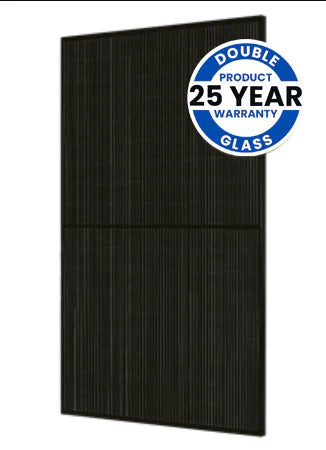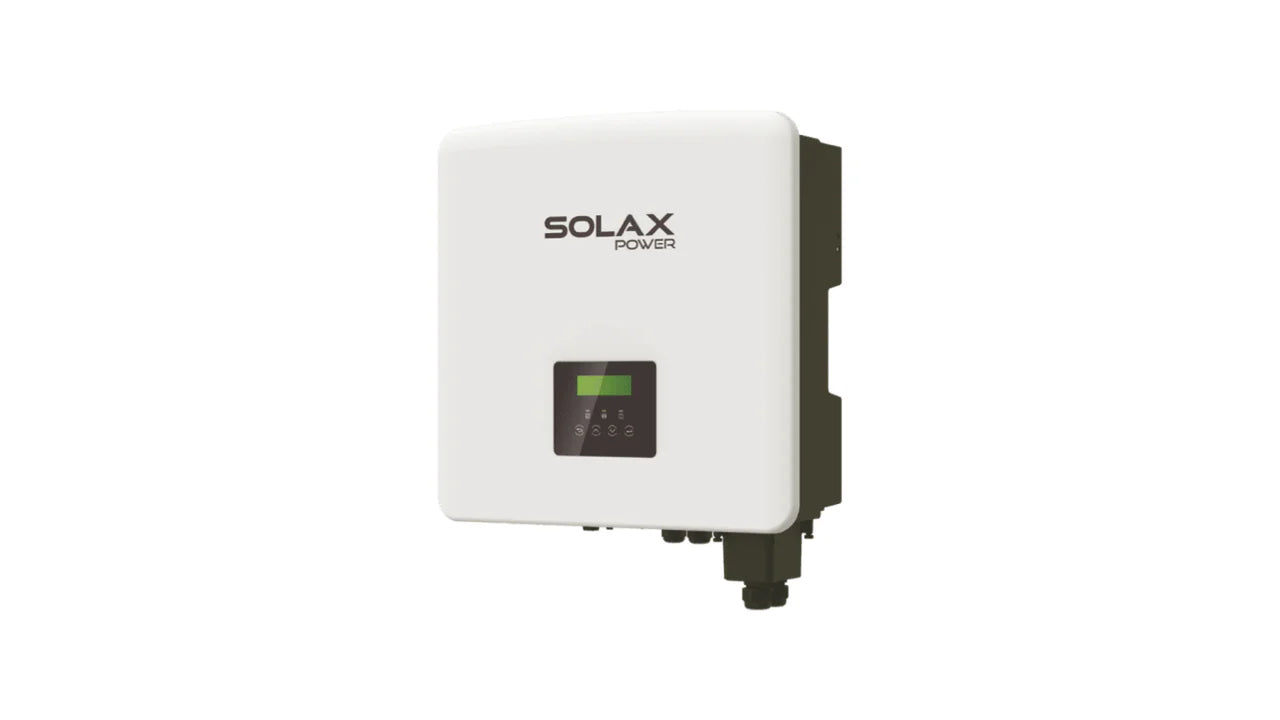BIFACIAL JA SOLAR 440W SOLAR PANELS FOR DOUBLE FACED FENCES UP TO 2M IN HEIGHT
The solar fence can be used around homes, at commercial or industrial premises or in farming. It offers an interesting alternative in the field of private power generation, as well as a cost-effective complement to existing rooftop installations, solar car ports and so on. The solar fence offers compelling dual uses and combines fencing and power generation in a unique way. Another particular benefit is the unique options for optimising private consumption: the generation profile of a solar fence will vary greatly depending on its alignment, and this can be optimised to suit the client’s consumption profile.
The Bifacial JA Solar 440W N-type Double Glass Black Frame MC4-EVO2 (JAM54D40-440/LB) solar panel is a 440W bifacial highest efficiency monocrystalline module. Powered by the latest MBB n-type solar cell and half-cell configuration, these modules have higher output power, lower LID, better weak illumination response and better temperature coefficient. JA solar panels come with a 25-year product warranty and a 30-year linear output warranty.
Ideal for off-grid photovoltaic solar energy installations, these panels stand out for their incredible quality/price ratio and their great power in a small size.
THIS PRODUCT HAS A MINIMUM ORDER QUANTITY OF 4
Key Features:Â
Assembled with Multi-Busbar Bifacial Percium Cells and Half Cell Configuration. Capable of absorbing light from both front and rear sides, producing a high power yield and low shading losses.
Enhanced reliability and durability with double glass pane encapsulation. Highly tolerant to harsh environmental conditions and resistant to PID in accordance to IEC 62804.Â
Improved all weather performance due to superior low irradiance performance and due to low temperature coefficient values.
Certified to withstand high wind loads (2400Pa) and heavy snow loads (5400Pa).
SUPERIOR WARRANTY:Â 25-year product warranty and 30-year extra linear power output warranty.
Must be installed by a licensed technician or electrician.
In the Box:
Bifacial JA Solar 440W Monocrystalline Solar Panel
Bifacial JA Solar 440W Monocrystalline Solar Panel Installation Manual
Delivery:
TWO WORKING DAY SHIPPING if ordered by 5 PM on a working day (longer to the Scottish Highlands, Islands, and Northern Ireland).
Detailed specifications:
Rated (Peak) Power (Wp): 440W in Standard 1000w/m2 solar light
Open Circuit Voltage (Voc): 38.90V (Vmp =32.47V)Â Â
Short Circuit Current (Isc): 14.31A (Imp = 13.55A)
Efficiency: 22.0%
Cell Type: Monocrystalline Silicon
Connector Type: MC4-EVO2
Certification: IECÂ ISOÂ UL
Net Weight: 22 KG
Size:Â 1762 X 1134 X 30 mm
Monting hole gap:Â 1096 mm
FREQUENTLY ASKED QUESTIONS
HOW GOOD IS THE JA SOLAR PANEL?
JA Solar panels offer affordability, comparable to Trina Solar, LONGi Solar, and Canadian Solar. With an average efficiency ranging from 20% to 21%, JA panels are among the most efficient in their price range. These panels are known for their durability and excellent shading tolerance.
WHO MANUFACTURES JA SOLAR PANELS?
JA Solar Holdings, a solar development company founded in Yangpu district, Shanghai, manufactures JA Solar panels. The company, established in 2005, is based in the People’s Republic of China and engages in the design, development, manufacturing, and sale of solar cell and solar module products. JA Solar has a global presence, selling its products to 135 countries and regions. Recognized for continuous technological innovation, financial stability, and a well-established global sales and customer service network, JA Solar is highly regarded as a leading global manufacturer of high-performance PV products.
WHAT IS THE PRODUCTION CAPACITY OF JA SOLAR MODULES?
As of the end of 2022, JA Solar reported module orders totaling 25.47 GW, mainly comprising 182mm size. In January and February 2023, it had already shipped 6.7 GW. The module production capacity until the end of 2022 was close to 50 GW, with wafer and cell capacity roughly 80% of the module capacity.
WHAT CURRENT CLASS IS JA SOLAR?
JA Solar modules have been classified as Class A according to the IEC 61730-2 standard. For roof installations, modules should be mounted over a fire-resistant covering suitable for this application, with adequate ventilation between the modules’ backsheet and the mounting surface.
IS JA SOLAR TIER 1?
Yes, JA Solar is classified as a Tier 1 solar panel manufacturer, joining the ranks of Jinko Solar, LONGi, Trina Solar, and Canadian Solar.
WHAT ARE THE TIER 1 SOLAR PANELS?
Tier 1 solar panels are crafted using the highest quality silicon. Higher silicon quality enhances the panel’s effectiveness. Furthermore, Tier 1 manufacturers use advanced robotic methods to regulate the production process, reducing or eliminating human mistakes.
HOW LONG DO TIER 1 SOLAR PANELS LAST?
Tier 1 solar panels come with an industry-standard warranty of 25 years or longer. In reality, solar panels often last longer than that, with the warranty typically guaranteeing panels will work above 80% of their rated efficiency after 25 years.
WHAT IS JA SOLAR MBB PANELS?
MBB stands for Multi Busbar, indicating that a solar cell is equipped with 12 or 16 busbars instead of 4, 5, or 6. This configuration results in a higher power output and greater reliability, with a power increase of approximately 2% to 2.5%.
WHAT IS MBB HALF CELL MODULE?
Assembled with multi-busbar PERC cells, the half-cell configuration offers advantages such as higher power output, better temperature-dependent performance, reduced shading effect on energy generation, a lower risk of hot spots, as well as enhanced tolerance for mechanical loading.
WHAT IS THE EFFICIENCY OF JA SOLAR PANELS?
The efficiency of JA Solar panels usually hovers between 20% and 21%, which is above average on the market. JA Solar engineers implement popular modern solar technologies, like half-cut cell construction, PERC cell technology, and busbars.
ARE HALF-CELL SOLAR PANELS BETTER?
Since half-cell modules produce more power and are more efficient and reliable than their full-cell counterparts, their use can lead to time and money savings for the installer. By delivering more power per square meter, fewer panels are required to generate the same power.







